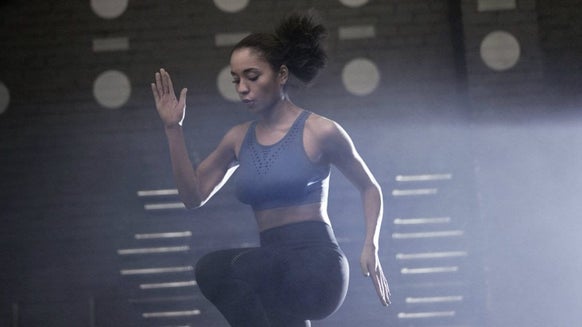Keep Your Child Active
The health benefits of physical activity are well established and for children, they include avoiding weight gain and hypertension, increased bone mineral density and a positive mental state. [1].
The government recommends all children and young people should participate in moderate to vigorous intensity physical activity for at least 60 minutes and up to several hours every week. Vigorous intensity activities include those that strengthen muscles and bones, and children should participate in these at least three times per week and can include activities such as skipping, running, and jumping.
It is recommended that all children and young people should reduce the amount of time spent being sedentary for long periods. This might include watching television, listening to music, playing on the iPad, or Xbox.
Not only do we have to think about the physiological health aspect of being inactive, but also the sociological and psychological impact that being inactive can cause our children. There are masses of evidence out there that suggests being active is good for improving our social skills and mental health, not only in adults but children as well.
How can sport improve social skills and mental health in children?
Being a Team Player
A team can’t succeed without working together. In sports, it is important for everyone within a team to play as a team. No matter how good the individual players. Communication is key and learning to be part of a team is linked with learning to value the effectiveness of teamwork. All workplaces look for good team players and this skill can be instilled through sport from an early age.
Controlling Emotions
As children grow up, we are constantly trying to teach them about controlling emotions. Especially the negative ones. In sport, emotions can run high and learning to channel them the right way can be tough for youngsters. A good coach or teacher understands that negative emotional stress can be counterproductive. Once this piece of wisdom is ingrained, your child will be better equipped to tackle a whole range of other life challenges.
Camaraderie
Joining a sports team or group gives children a sense of belonging and the chance to make new friends. Some may even become friends for life! Getting involved in a sport also gives children another social circle outside of school.
Learning to Lose
Bad sportsmanship is not a pretty thing. It’s good to have a competitive edge and a strong drive to succeed. Losing with integrity to a better opponent is a lot more honourable than throwing tantrums or shouting. In life, we cannot win at everything and we need to teach our children this from a young age. A great way to do this is through engaging in sport.
Self Esteem
There is a lot of research which suggests sport and other physical activities can contribute to the development of self-esteem in children. From cheering at the sideline to a pat on the back, or a handshake with the referee at the end of a match, is all character building for your child. The supportive relationships of coaches and teammates, plus encouragement from parents, can all positively affect children’s self-esteem.
An adults attitude to sport is often shaped by their experiences as a child. If all we remember is running cross country in the freezing cold, or not being good at a certain sport and feeling insecure then we remember this as adults and are less likely to engage in an activity as we grow.
Some schools of thought illustrate that according to physical, psychological, and cognitive development, a child should be at least 6 years of age before participating in organised team sports, such as football and basketball. An accurate assessment of each child’s individual sports readiness should be performed to work out if a child is prepared to enjoy and at which level of competition the child can successfully participate.
A mismatch in sports readiness and skill development can lead to anxiety, stress, and ultimately attrition for the young person. So learn to understand what your child enjoys doing and what they feel they are good at. Two things matter most at children’s age: basic competence and enjoyment. The sense that ‘you can do this’ whatever your level of ability and that you can get something out of it that matters to you, builds strong foundations. What matters to each child varies – it might be winning, spending time with a parent or just the freedom of running around with friends.
Young people experience many transitions as they grow: physically and emotionally, especially around puberty; the big jump from primary to secondary school; moving to further or higher education. We need to make sure that children do not lose their enjoyment of sport and physical activity as they move from one stage to the next and it is important to stay interested in their chosen sport and to introduce them to new sports and activities if they look like they have lost their enjoyment (2).
How can I keep my child active even if they are not sporty?
Parents can play a key role in helping their child become more physically active. Here are 8 ways to help get your non-sporty child active:
? Find a fun activity. Help your child find a sport or activity that they enjoy. The more they enjoy the activity, the more likely they will continue it. Get the entire family involved. It is a great way to spend time together.
? Read children books on sports - or watch children’s movies about sports. Do you have a little reader? Find some sports-themed books to stir their interest.
? Choose an activity that is developmentally appropriate. For example, a 5-or 6-year-old child is not ready for lifting weights or a 4-mile run, but riding a bike, or swimming is appropriate.
? Provide active toys. Young children especially need easy access to balls, jump ropes, and other active toys.
? Be a role model. Children who regularly see their parents enjoying sports and physical activity are more likely to do so themselves. So, head out for a family bike ride, or a paddleboard together.
? Play with your child. Help them learn a new sport. Practice skills, such as hoop practice, with just you and them. It may be spending time with them and working with them may just help them develop the skill they need.
? Turn off the TV. Limit TV watching and computer use. Being sedentary is not good for their health and may contribute to overweight and obesity.
? Make time for exercise. Some children are so overscheduled with homework, music lessons, and other planned activities that they do not have time for exercise. So ensure that their diary doesn’t get too full with academic studying.
Not all children like team sports. Simply running around, hanging out with friends in a park, and making up active games can all increase activity. There are also individual sports, not team games that children may enjoy. Below is a list of examples of some individual sports.
? Rollerblading
? Horse Riding
? Dance Classes
? Swimming
? Cycling
? Hiking
? Golf
? Tennis
? Fencing
? Gymnastics
? Yoga and other fitness classes
Work with your child to find something active that he or she likes. Try to remain open-minded. Maybe your child is interested in an activity that is not offered at school. Find out what the school offer and if there isn’t anything they like, look for other clubs or groups locally.
Is your non-sporty child addicted to computer games?
Are you worried your child is addicted to computer games? Whilst instantly we think this is a bad thing (due to your child being sedentary whilst playing them) some studies have shown that boys, who have played sporting computer games and can see a sport being played well, are more likely to then go and try and repeat this themselves, therefore increasing their activity levels.
There are several video games that can be used for increasing exercise and activity. Games like Dance Central, and Zombies! Run provide entertainment and fitness in an engaging and encouraging way. Although these games are geared toward people who want a workout, Pokémon Go could similarly fall into a fitness category. Wandering around catching Pokémon requires a lot of energy, especially when the Pokémon characters are spaced quite a way apart.
So if your child is addicted then maybe encourage them to try sporting video games online in replacement of videos where your child is sedentary.
Summary
Not all children are going to enjoy a sport and it’s about finding the right activity to help them learn to enjoy sport and exercise. It’s about finding the best to approach your help encourage your child to be sportier, and it’s about doing your research into ways to do this.







